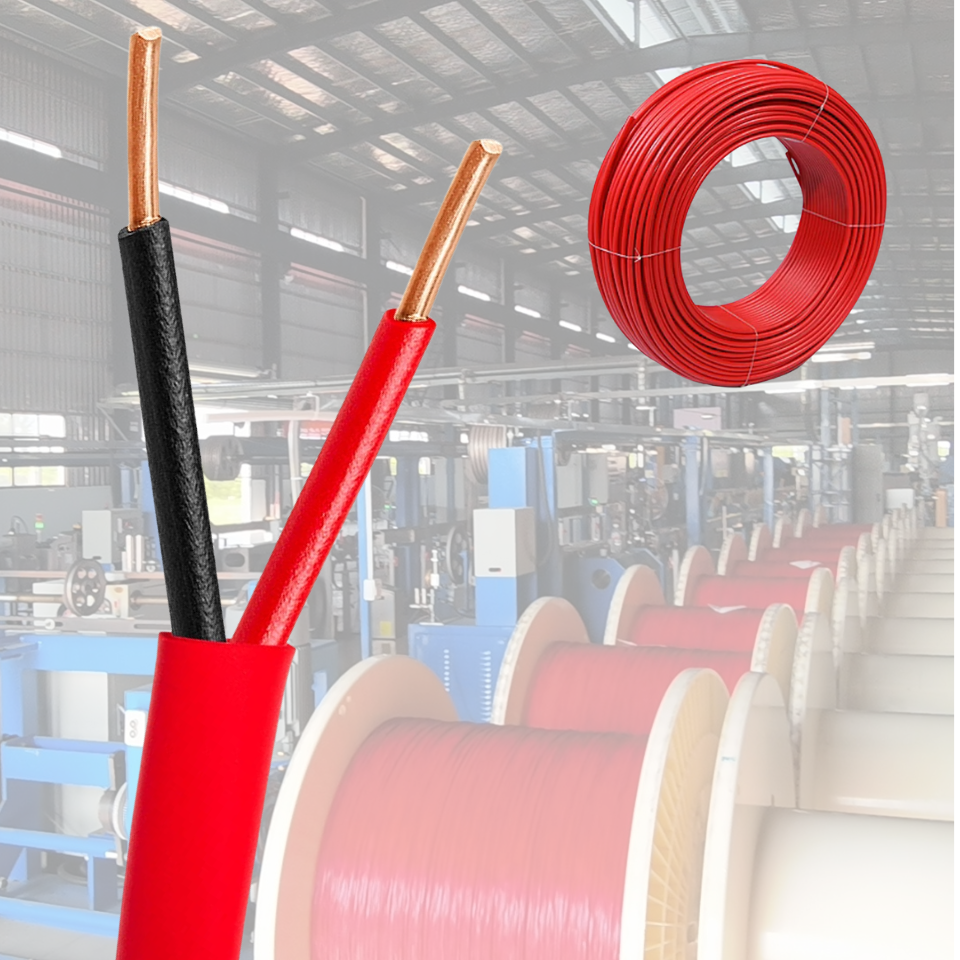Problem: Fires can quickly disable critical systems, leading to chaos and increased danger. Agitation: Standard cables fail, cutting off power to emergency lights, alarms, and firefighting equipment. Solution: Fire-resistant cables maintain functionality during a blaze, keeping essential services operational when they’re needed most.
Fire-resistant cables are specialized electrical cables designed to maintain circuit integrity and continue functioning for a specified period when exposed to fire. Unlike regular cables that quickly fail under high temperatures, these cables ensure that essential systems like emergency lighting, alarm systems, and fire pumps continue to operate, providing crucial support during a fire incident.
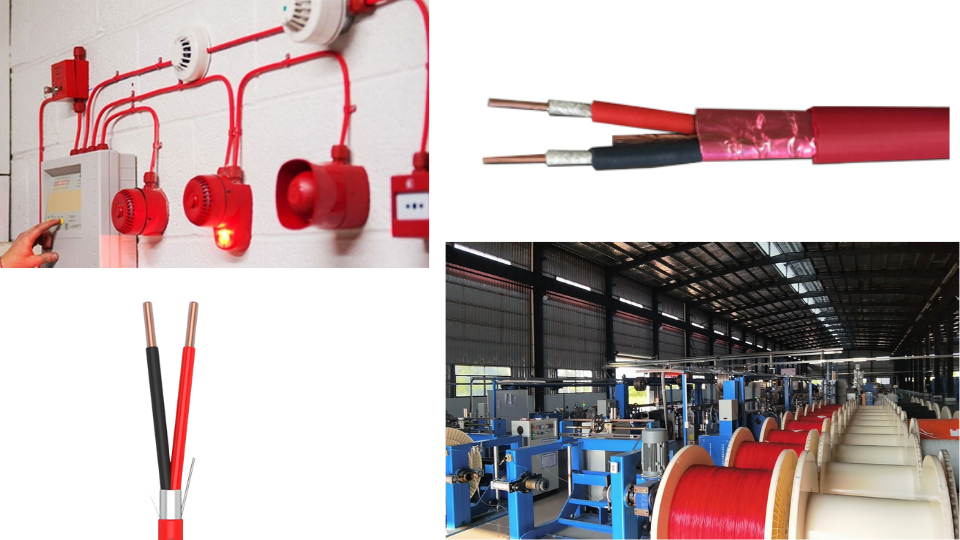
Choosing the right fire-resistant cable is about ensuring your systems can withstand the worst conditions. Always match the cable’s fire resistance to the risk level of the application.
What are the Principles and Types of Fire Resistant Cables?
Problem: During a fire, ordinary cables become useless, but how do fire-resistant cables manage to keep working? Agitation: It’s not magic; there’s some technology behind them that allows maintain power under extremely high temperature. Solution: Understanding the principles and types of fire-resistant cables helps you choose the right one for your protection needs.
Fire-resistant cables[1] rely on insulation materials that can withstand extremely high temperatures, preventing short circuits and maintaining electrical conductivity even when exposed to flames. The main types include cables with mica tape insulation (offering excellent fire resistance) and those with specialized polymer insulations that form a protective char layer when burned.
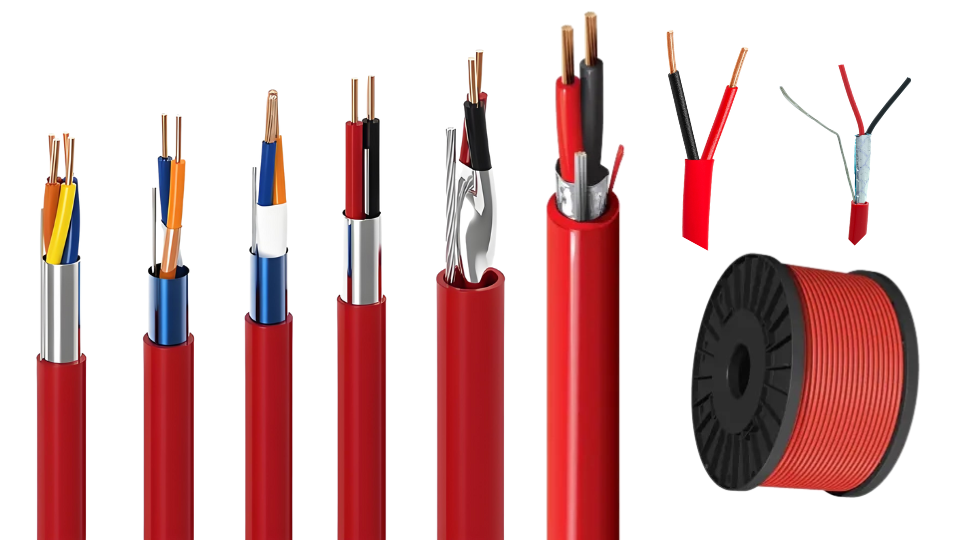
I’ve spent years understanding how these cables are constructed, and it’s fascinating. The key is in the materials. The principle behind fire-resistant cables is to ensure that the conductors within the cable remain electrically isolated from each other even when exposed to flames and extreme heat. This is primarily achieved through specialized insulation materials that can withstand high temperatures without breaking down.
Here’s a breakdown of the principles and common types I’ve seen:
- Mica Tape Insulation[2]: This is the most common and effective method. Mica is a mineral with exceptional heat resistance and dielectric properties. In fire-resistant cables, thin layers of mica tape are wrapped around the conductors. Even when the outer layers of the cable burn away, the mica tape remains intact, providing a continuous insulating barrier capable of withstanding temperatures up to 1000°C (1832°F) or higher for a specified duration.
- Ceramic or Glass Fiber Insulation[3]: Some cables use ceramic or glass fiber materials as insulation. These materials are inherently non-combustible and have excellent thermal stability. They provide a robust insulating layer that prevents short circuits during a fire.
- Cross-linked Polyethylene (XLPE)[4]: While not as inherently fire-resistant as mica, these materials can be formulated to offer some degree of fire resistance. XLPE, when cross-linked, forms a thermoset polymer that resists melting at high temperatures. Silicone rubber also retains its insulating properties at elevated temperatures. However, these materials typically rely on additional fire-retardant additives or coatings to enhance their performance.
- Intumescent Materials[5]: Some fire-resistant cables incorporate intumescent materials in their construction. These materials expand when exposed to heat, forming a char layer that provides thermal insulation to the conductors.
It’s important to distinguish between fire-resistant cables and fire-retardant cables. Fire-retardant cables are designed to resist ignition and slow the spread of flames, but they do not necessarily maintain circuit integrity during a fire. Fire-resistant cables, on the other hand, are specifically designed to keep working, providing power to essential circuits during a fire emergency. I always look for certifications like IEC 60331 or BS 6387[6] to verify the fire resistance performance of these cables.
Are Fire Retardant Wires Really Useful?
Problem: Fire-retardant wires sound good, but do they actually make a difference in a real fire? Agitation: Many people doubt their effectiveness, wondering if they are just a marketing gimmick. Solution: The reality is that fire-retardant wires can be very beneficial, but it’s important to understand their limitations.
Yes, fire-retardant wires[7] wires are indeed useful because they slow down the spread of flames and reduce the risk of a fire escalating. While they won’t stop a fire completely, they provide valuable time for evacuation and firefighting efforts by not easily igniting and self-extinguishing when the source of the fire is removed.
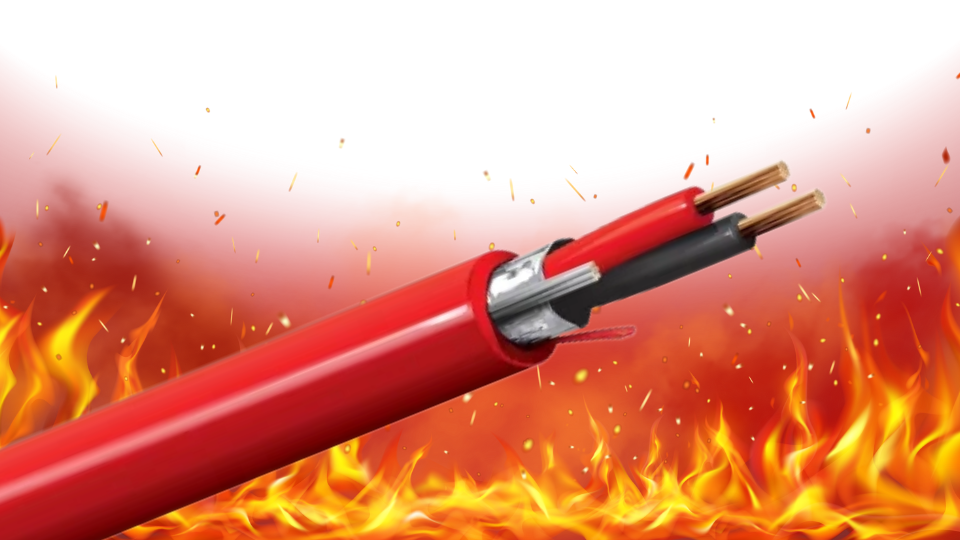
From my experience, the key is understanding what fire-retardant wires can and can’t do. They are not a magic bullet. Fire-retardant wires are designed to impede the propagation of a fire. This means they resist ignition and, if ignited, burn slowly and may self-extinguish when the source of the fire is removed. This behavior is achieved by incorporating fire-retardant additives into the cable’s insulation and jacket materials. These additives release flame-inhibiting gases or create a char layer on the surface of the cable, which slows down the burning process and prevents the fire from spreading rapidly along the cable. They can prevent a small electrical fire from quickly spreading through a building’s wiring system. Here are a few scenarios where I’ve seen them make a real difference:
- Early Fire Detection[8]: By slowing the spread of flames, fire-retardant wires can give occupants more time to detect a fire and evacuate the building.
- Reduced Smoke and Toxic Fumes: Some fire-retardant compounds also reduce the amount of smoke and toxic fumes released during a fire, further improving visibility and air quality for evacuation.
- Reduced Smoke and Toxic Fumes[9]: In critical facilities like hospitals or data centers, fire-retardant wires can help protect essential infrastructure by limiting the extent of damage caused by a fire.
- Compliance with Building Codes[10]: Many building codes now mandate the use of fire-retardant wires in certain applications, reflecting their recognized value in enhancing fire safety.
I make sure that when selecting fire-retardant cables, it’s crucial to consider the specific fire rating and standards that the cable meets, such as IEC 60332 for flame propagation. Remember, fire-retardant wires are just one component. A comprehensive fire safety strategy should also include fire detection and suppression systems, proper building design, and evacuation plans.
What is the Role of Cable in Fire Accidents?
Problem: Cables are often overlooked in fire safety discussions, but they can play a significant role. Agitation: Cables can both start and spread fires. Solution: Understanding the complex role that cables play in fire incidents is essential for improving overall fire safety measures.
In fire accidents, cables can act as both a source and a pathway for fire. Faulty wiring or overloaded circuits within cables can initiate a fire, while the cable insulation itself can contribute fuel and spread the flames along its length, significantly worsening the situation.
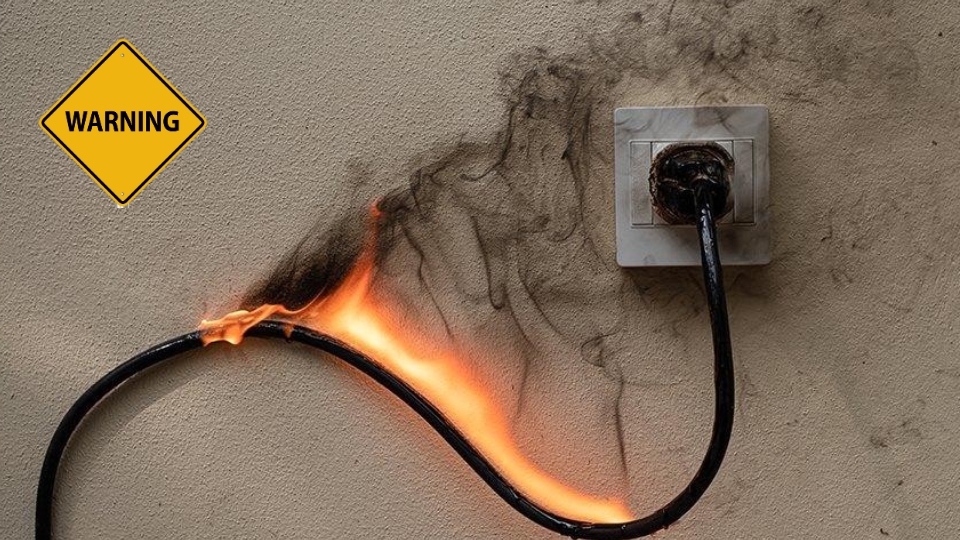
Cables play a more complex role in fire accidents than many people realize. Not only can faulty cables ignite fires, but they can also exacerbate the problem by providing a pathway for flames to spread. This is based on my practical experiences. Here are the key roles I’ve identified:
- Ignition Source[11]: Defective electrical cables are a common cause of fires. Over time, cable insulation can degrade due to age, wear, or environmental factors, leading to short circuits or electrical arcing. Overloaded circuits, where more current flows through the cable than it is designed to handle, can also cause the cable to overheat and ignite surrounding materials. Poorly installed or damaged connectors can also create hotspots and trigger a fire.
- Fuel Load[12]: The insulation and jacketing materials of cables are typically made from polymers, which are combustible. When a fire starts, these materials contribute to the fuel load, increasing the intensity and duration of the fire. Traditional PVC cables, in particular, release large amounts of thick, black smoke and toxic gases when burned, creating hazardous conditions for occupants and firefighters.
- Flame Propagation[13]: Cables can act as a pathway for fire to spread rapidly through a building. Once a cable ignites, the flames can travel along its length, spreading to other areas of the building and igniting other combustible materials. This is especially problematic in concealed spaces like ceilings and walls, where the fire can spread undetected. Vertical cable runs can also carry flames quickly from one floor to another, compromising the entire building.
- Circuit Failure[14]: When cables are exposed to fire, they can quickly fail, cutting off power to essential systems like emergency lighting, fire alarms, and fire suppression systems. This can severely hamper evacuation and firefighting efforts, increasing the risk of injuries and fatalities.
To mitigate these risks, I ensure that there are the proper use of fire-resistant and fire-retardant cables; regular inspection and maintenance of electrical systems; proper installation practices. Remember that the type of cable used, the way it’s installed, and the maintenance it receives can significantly impact fire safety.
What Should I Consider When Choosing Electrical Cables?
Problem: The array of electrical cables available can be confusing, making it difficult to choose the right one. Agitation: Selecting the wrong cable can lead to performance issues, safety hazards, and costly replacements. Solution: Breaking down the key considerations when choosing electrical cables ensures optimal performance and safety.
When choosing electrical cables, consider factors like the application, voltage and current requirements, environmental conditions, safety standards, and regulatory compliance. Selecting the right cable involves balancing electrical needs, environmental factors, and safety considerations to ensure effective and safe operation.
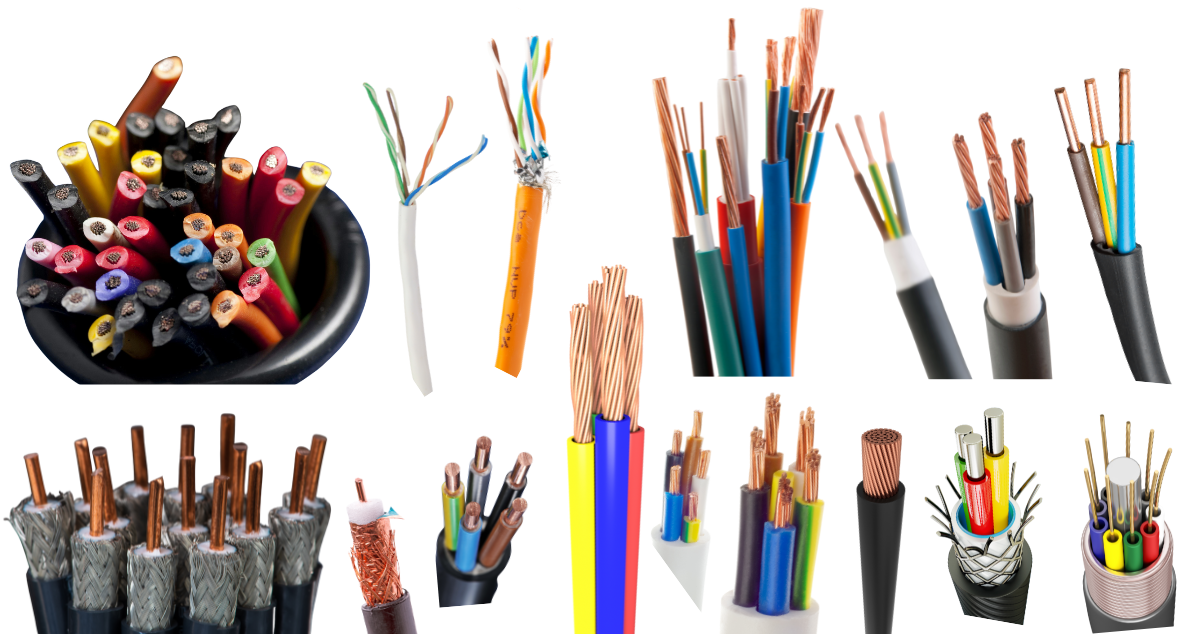
As a procurement expert, cable selection is a critical part of my job. It’s a multifaceted decision-making process. Here’s a step-by-step guide.
- Application: Understand the specific purpose of the cable. Will it be used for power distribution, signal transmission, data communication, or control circuits? Different applications have different requirements in terms of voltage, current, and signal integrity.
- Voltage and Current Requirements[15]: Calculate the maximum voltage and current that the cable will need to carry. Select a cable with a voltage and current rating that exceeds these values to provide a safety margin.
- Environmental Conditions[16]: Assess the environmental conditions in which the cable will be installed. Will it be exposed to extreme temperatures, moisture, chemicals, UV radiation, or mechanical stress? Choose a cable with insulation and jacketing materials that are resistant to these environmental factors.
- Safety Standards[17]: Ensure that the cable meets all applicable safety standards, such as UL (Underwriters Laboratories), IEC (International Electrotechnical Commission), or NEC (National Electrical Code). Look for cables that are certified and tested by recognized testing laboratories.
- Regulatory Compliance[18]: Check local and national regulations regarding the use of electrical cables. Some jurisdictions may require specific cable types or installation practices.
-
Cable Type and Construction:
- Conductor Material[19]: Copper is the most common conductor material due to its excellent conductivity. Aluminum conductors are lighter and less expensive but have lower conductivity.
- Insulation Material: Common insulation materials include PVC, XLPE, polyethylene, and fluoropolymers. Each material has different electrical, thermal, and chemical properties.
- Jacket Material: The jacket protects the cable from environmental factors and mechanical damage. Common jacket materials include PVC, polyethylene, polyurethane, and thermoplastic elastomers.
- Shielding: Shielded cables are used to reduce electromagnetic interference (EMI) and radio frequency interference (RFI). Shielding is typically made from a metallic braid or foil.
- Flexibility: Determine how flexible the cable needs to be. Flexible cables are used in applications where the cable will be subjected to bending or flexing.
- Fire Performance[20]: If fire safety is a concern, choose cables that are fire-resistant or fire-retardant.
- Cost: Consider the total cost of the cable, including purchase price, installation costs, and maintenance expenses. While it may be tempting to choose the cheapest option, it’s important to consider the long-term reliability and safety of the cable.
By carefully considering these factors, I can select the right electrical cables for any application, ensuring optimal performance, safety, and reliability.
Conclusion
Fire-resistant cables are crucial for maintaining essential systems during a fire, while fire-retardant cables slow the spread. Consider safety, regulations, and environmental factors for optimal cable selection.
[1]: Explore this link to understand the technology behind fire-resistant cables and their importance in fire safety.
[2]: Learn about mica tape insulation, its properties, and why it’s crucial for fire-resistant cables.
[3]: Discover how ceramic and glass fiber materials improve the safety and performance of fire-resistant cables.
[4]: Find out how XLPE contributes to the fire resistance of cables and its applications in safety.
[5]: Explore the function of intumescent materials in enhancing fire resistance and safety in cables.
[6]: Understand the significance of these certifications in ensuring the reliability of fire-resistant cables.
[7]: Explore how fire-retardant wires can enhance safety by slowing fire spread and aiding evacuation.
[8]: Learn about the critical role of early fire detection in saving lives and property during a fire.
[9]: Discover how minimizing smoke and fumes can significantly improve evacuation safety and air quality.
[10]: Understand the importance of building codes in ensuring safety and preventing fire hazards in structures.
[11]: Understanding ignition sources can help prevent electrical fires and improve safety measures in homes and businesses.
[12]: Exploring fuel load dynamics can enhance your knowledge of fire behavior and safety protocols.
[13]: Learning about flame propagation can aid in designing safer buildings and fire prevention strategies.
[14]: Understanding circuit failure can help in planning effective emergency responses and improving safety systems.
[16]: Environmental factors can significantly impact cable performance. Discover how to choose cables that withstand various conditions.
[17]: Safety standards ensure reliable and safe cable use. Learn about essential certifications and compliance requirements.
[18]: Regulatory compliance is vital for legal and safety reasons. Find out which regulations apply to your cable selection.
[19]: Choosing the right conductor material affects conductivity and cost. Explore the benefits of copper vs. aluminum.
[20]: Fire safety is critical in cable selection. Learn about fire-resistant options to enhance safety in your installations.

